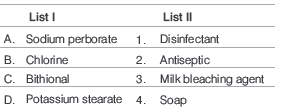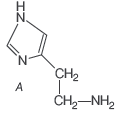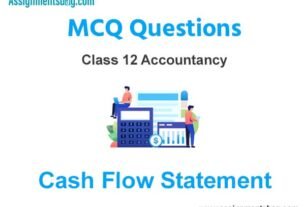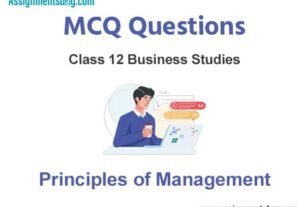Please refer to MCQ Questions Chapter 16 Chemistry in Everyday Life Class 12 Chemistry with answers provided below. These multiple-choice questions have been developed based on the latest NCERT book for class 12 Chemistry issued for the current academic year. We have provided MCQ Questions for Class 12 Chemistry for all chapters on our website. Students should learn the objective based questions for Chapter 16 Chemistry in Everyday Life in Class 12 Chemistry provided below to get more marks in exams.
Chapter 16 Chemistry in Everyday Life MCQ Questions
Please refer to the following Chapter 16 Chemistry in Everyday Life MCQ Questions Class 12 Chemistry with solutions for all important topics in the chapter.
MCQ Questions Answers for Chapter 16 Chemistry in Everyday Life Class 12 Chemistry
Question. The drug given during hypertension is
(a) streptomycin
(b) chloroxylenol
(c) equanil
(d) aspirin
Answer
C
Question. Antiseptics and disinfectants either kill or prevent growth of microorganisms. Identify which of the following is not true?
(a) A 0.2% solution of phenol is an antiseptic while 1% solution acts as a disinfectant
(b) Chloride and iodine are used as strong disinfectants
(c) Dilute solutions of boric acid and hydrogen peroxide are strong antiseptics
(d) Disinfectants harm the living tissue
Answer
C
Question. Tranquilizers are the substances used for the treatment of
(a) cancer
(b) AIDS
(c) mental diseases
(d) physical disorders
Answer
C
Question. Substances used in bringing down the body temperature in high fever are called
(a) antiseptics
(b) pyretics
(c) antibiotics
(d) antipyretics
Answer
D
Question. Which of the following is not true for antibiotics?
(a) Tetracycline is one of the broad spectrum antibiotic which is effective against a large number of harmful microorganisms
(b) Streptomycin is highly effective against microorganisms which cause tuberculosis
(c) Penicillin has a narrow spectrum and certain persons are sensitive to it
(d) Penicillin may be administered without testing the patients for sensitivity to it
Answer
D
Question. The local anaesthetic, which is used for small surgical operation is
(a) ether
(b) nitrous oxide
(c) cyclopropane
(d) procaine
Answer
D
Question. Barbituric acid and its derivatives are well known as
(a) tranquilizers
(b) antiseptics
(c) analgesics
(d) antipyretics
Answer
A
Question. A drug that is antipyretic as well as analgesic is
(a) chloropromazine hydrochloride
(b) para-acetamidophenol
(c) chloroquine
(d) penicillin
Answer
D
Question. One of the most widely used drug in medicine iodex is
(a) methyl salicylate
(b) ethyl salicylate
(c) acetyl salicylic acid
(d) o-hydroxy benzoic acid
Answer
A
Question. The functional groups present in salol are
(a) —NH2 and —OR
(b) —NH2 and —COOH
(c) —OR and —OH
(d) —OH and —COOR
Answer
D
Question. Which of the following is used as an antiseptic?
(a) Phenol
(b) Benzaldehyde
(c) Benzalamine
(d) Maleic anhydride
Answer
A
Question. Aspirin is known
(a) acetyl salicylic acid
(b) phenyl salicylate
(c) acetyl salicylate
(d) methyl salicylic acid
Answer
A
Question. The pair whose both species are used in antacid medicinal preparation is
(a) NaHCO3 andMg(OH)2
(b) Na2CO3 and Ca(HCO)2
(c) Ca(HCO3)2 andMg(OH)2
(d) Ca(OH)2 and NaHCO3
Answer
A
Question. Which of the following compounds is not an antacid?
(a) Aluminium hydroxide
(b) Cimetidine
(c) Phenelzine
(d) Ranitidine
Answer
C
Question. The pH value of gastric juice in human stomach is about 1.8 and in the small intestine it is about 7.8. The pKa value of aspirin is 3.5. Aspirin will be
(a) ionised in the small intestine and almost unionised in the stomach
(b) unionised in the small intestine and in the stomach
(c) completely ionised in the small intestine and in the stomach
(d) ionised in the stomach and almost unionised in the small intestine
Answer
A
Question. Compound A given below is

(a) antiseptic
(b) antibiotic
(c) analgesic
(d) pesticide
Answer
C
Question. The drug used as an antidepressant is
(a) luminal
(b) tofranil
(c) mescaline
(d) sulphadiazine
Answer
A
Question. H1-receptor antagonists is a term associated with
(a) antiseptics
(b) antihistamines
(c) antacids
(d) analgesics
Answer
B
Question. A broad spectrum antibiotic is
(a) paracetamol
(b) penicillin
(c) aspirin
(d) chloramphenicol
Answer
D
Question. Streptomycin, a well known antibiotic, is a derivative of
(a) peptides
(b) carbohydrates
(c) purines
(d) None of these
Answer
B
Question. The correct structure of the drug paracetamol is

Answer
B
Question. An ester used as medicine is
(a) ethyl acetate
(b) methyl acetate
(c) methyl salicylate
(d) ethyl benzoate
Answer
C
Question. Which of the following is used as a “morning after pill”?
(a) Mifepristone
(b) Ethynylestradiol
(c) Northindrone
(d) Bithional
Answer
A
Question. Which of the following will not enhance nutritional value of food?
(a) Minerals
(b) Artificial sweeteners
(c) Vitamins
(d) Amino acids
Answer
B
Question. Chloramine-T is a
(a) antiseptic
(b) disinfectant
(c) analgesic
(d) antipyretics
Answer
B
Question. Match the following and choose the correct option.

Codes
A B C D
(a) 3 4 1 2
(b) 4 1 2 3
(c) 3 1 4 2
(d) 4 2 1 3
Answer
A
Question. Which of the following statements about aspirin is not true?
(a) It is effective in relieving pain
(b) It is a neurologically active drug
(c) It has antiblood clotting action
(d) It belongs to narcotic analgesics
Answer
D
Question. Which of the following represents soap?
(a) C17H35COOH
(b) C17H35COOK
(c) C15H31COOH
(d) C17H35(COO)2Ca
Answer
B
Question. Which of the following is not true for a detergent molecule?
(a) It has a non-polar organic part and a polar group
(b) It is not easily biodegraded
(c) It is sodium salt of a fatty acid
(d) It is a surface active reagent
Answer
C
Question. Among the following sweeteners, which one has the lowest sweetness value?
(a) Alitame
(b) Aspartame
(c) Saccharin
(d) Sucralose
Answer
B
Question. Match the chemicals in List I with their uses in List II.

Codes
A B C D
(a) 2 1 3 4
(b) 3 4 2 1
(c) 3 1 2 4
(d) 2 3 4 1
Answer
C
Question. The reagents used in the preparation of aspirin from salicylic acid.
(a) SOCl2, pyridine
(b) CH3COOH, HCl
(c) CH3Cl, AlCl3
(d) (CH3CO)2O,H+
Answer
D
Question. Which of the following can possibly be used as analgesic without causing addiction and modification?
(a) Morphine
(b) N-acetyl-para-aminophenol
(c) Diazepam
(d) Tetrahydrocatenol
Answer
B
Question. Compound which is added to soap to impart antiseptic properties is
(a) sodium lauryl sulphate
(b) sodium dodecylbenzenesulphonate
(c) rosin
(d) bithional
Answer
D
Question. Detergents are known to pollute rivers and water ways. However, detergents can be made biodegradable and pollution free by taking
(a) cyclic hydrocarbon chain
(b) shorter hydrocarbon chain
(c) unbranched hydrocarbon chain
(d) hydrocarbon with more branching
Answer
C
Question. The drug A is used as a/an

(a) antacid
(b) analgesic
(c) vasodilator
(d) antiseptic
Answer
A
Question. The ratio of the therapeutic index is ten means
(a) ten times a dose used for curative purposes would kill the parasite as well as the patient
(b) to cure the patient the dose should be given 10 times to him
(c) 10 times dose given, would not be sufficient to cure the patient
(d) the dose should be given for 10 days
Answer
A
Question. Which of the following is known as invert soap?
(a) Pentaerythritol monostearate
(b) Sodium stearyl ammonium bromide
(c) Sodium stearyl sulphate
(d) Ethoxylated nonyphenol
Answer
B
Question. Which of the following is an anionic detergent?
(a) Sodium lauryl sulphate
(b) Cetyltrimethyl ammonium bromide
(c) Glyceryl oleate
(d) Sodium stearate
Answer
A
Question. Which of the following statements is not correct?
(a) Some antiseptics can be added to soaps
(b) Dilute solutions of some dis-infectants can be used as an antiseptic
(c) Disinfectants are anti-microbial drugs
(d) Antiseptic medicines can be ingested
Answer
D

We hope you liked the above provided MCQ Questions Chapter 16 Chemistry in Everyday Life Class 12 Chemistry with solutions. If you have any questions please ask us in the comments box below.


